Teal exteriors offer a refreshing departure from conventional neutrals, infusing homes with personality and vibrancy. Whether applied as a bold façade, subtle accent, or paired with contrasting materials, teal can enhance architectural styles from modern minimalism to classic Victorian. Key strategies include balancing teal with crisp trims or natural textures, employing complementary accents like mustard or copper, and leveraging landscape elements to soften or dramatize the palette. From beach-inspired cottages to urban townhomes, these 20 ideas showcase how teal’s blue-green depth adapts to diverse designs, creating a harmonious yet striking curb appeal.
1. Bold Teal Facade with Crisp White Trim
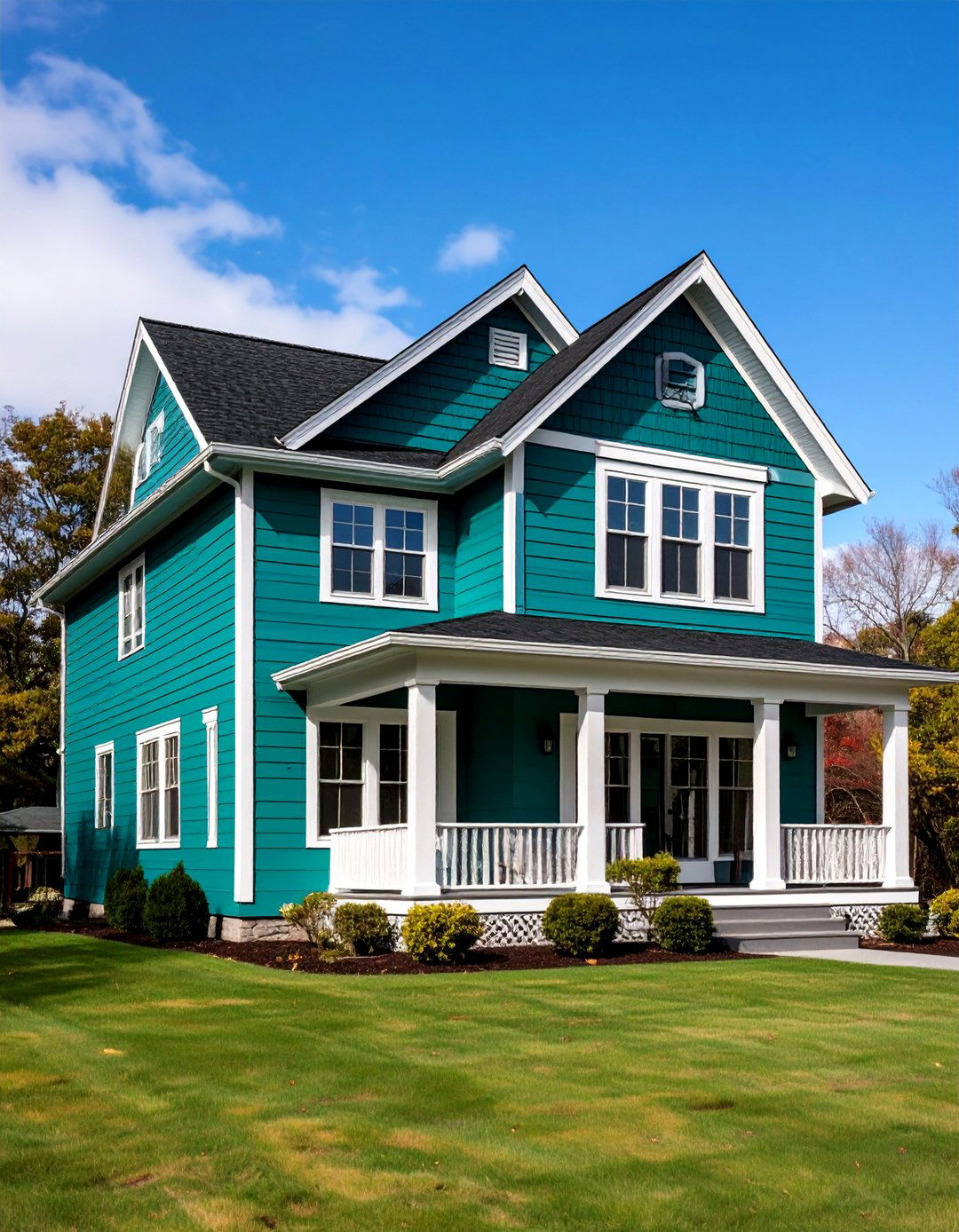
A fully teal-painted exterior can make a powerful statement when balanced with stark white trim around windows, doors, and rooflines. This high-contrast pairing emphasizes architectural details, lending a clean, modern appearance that remains visually engaging. Ideal for contemporary or coastal homes, the white delineates each teal surface, preventing the bold hue from overwhelming the design. By selecting a teal with medium saturation—such as Sherwin Williams’ Seaworthy—you achieve depth without darkness, ensuring the color reads vibrantly in both sun and shade.
2. Teal Front Door Accent

For homeowners hesitant to commit fully to teal, painting only the front door provides a playful yet elegant accent. A bright or medium teal door pops against neutral exteriors—beige, gray, or white—inviting a focal point that enhances curb appeal. As Better Homes & Gardens recommends, vibrant front doors in teal or deep turquoise complement many architectural styles while inviting warmth and character to the entryway.
3. Teal Shiplap and Natural Wood Contrast

Combining teal-painted horizontal shiplap siding with unpainted or lightly stained wood accents—such as porch ceilings, beams, or garage doors—creates an organic, tactile contrast. The wood’s warmth grounds the cool teal, adding texture and preventing monotony. This approach suits farmhouse and Craftsman styles, where natural materials are celebrated. Ensure the wood finish is protected with a durable sealant to maintain its warmth against the elements.
4. Deep Teal Stone Veneer Base
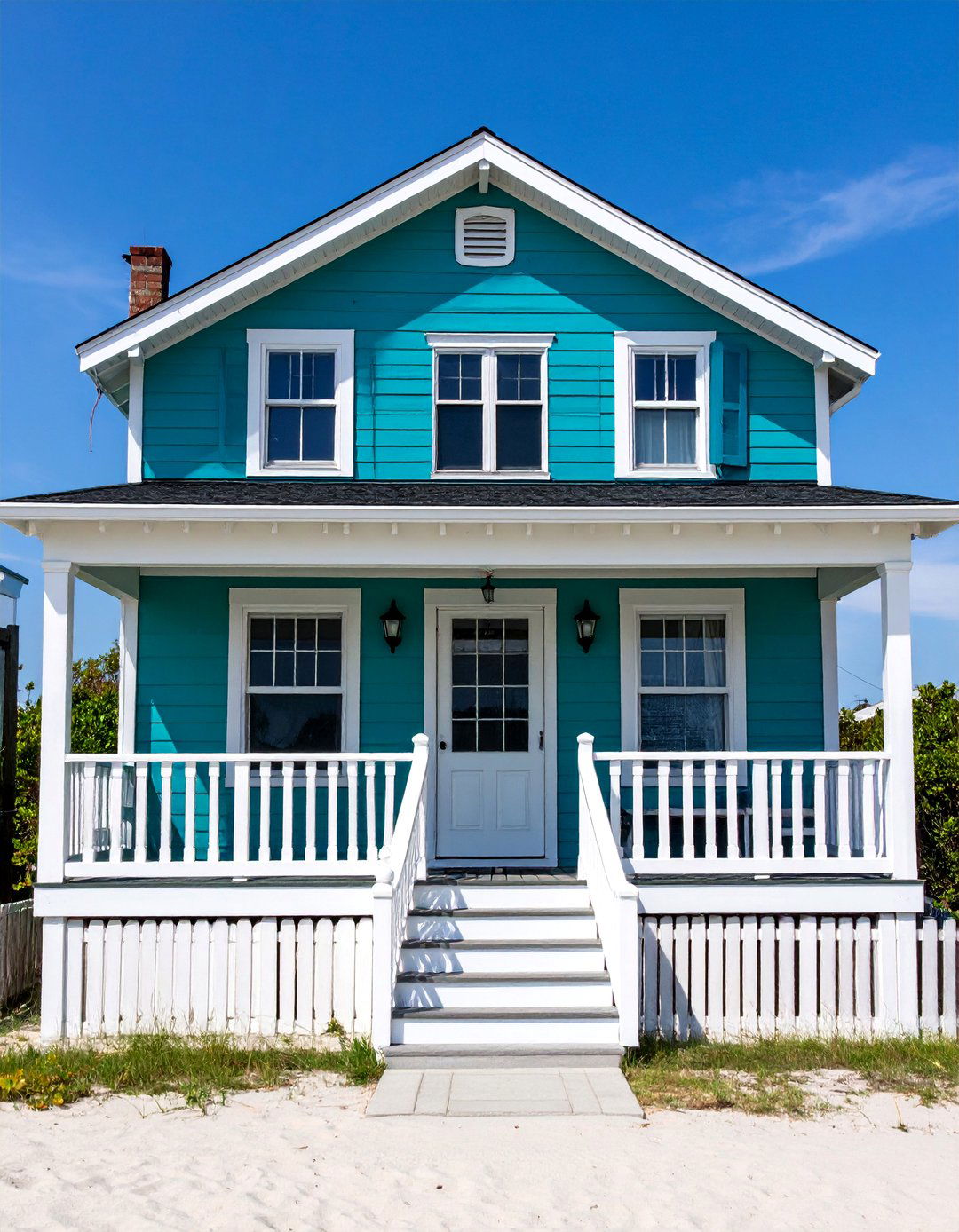
Anchoring a teal-painted façade with a stone veneer wainscot or foundation wrap introduces a tactile, earthy element. Choose a stone palette of grays, browns, or charcoal to harmonize with the teal’s blue-green undertones. This technique adds visual weight at the building’s base, lending a sense of permanence and luxury. The Spruce highlights that pairing bold paint with natural stone creates a cohesive exterior that blends modern colors with traditional materials.
5. Teal with Black Window Frames
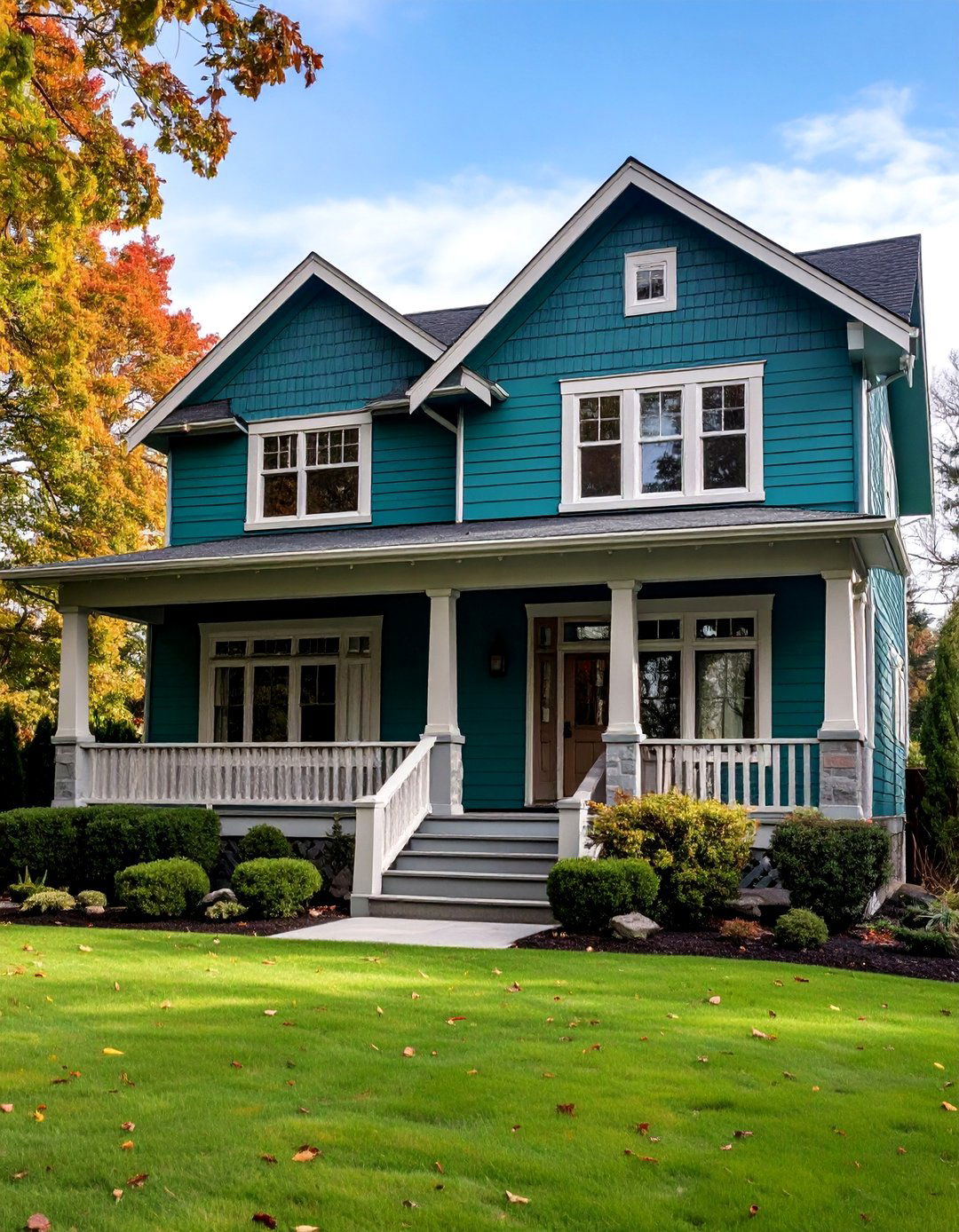
Swapping standard white window frames for matte black creates a dramatic outline against teal siding. This modern touch sharpens architectural lines and adds sophistication, particularly on urban townhouses or minimalist homes. Black frames ground the vivid teal and coordinate well with other dark accents—light fixtures, railings, or house numbers—for a unified design. Pinterest showcases numerous projects where black-and-teal combinations deliver a striking, contemporary curb appeal.
6. Teal and Mustard Combination
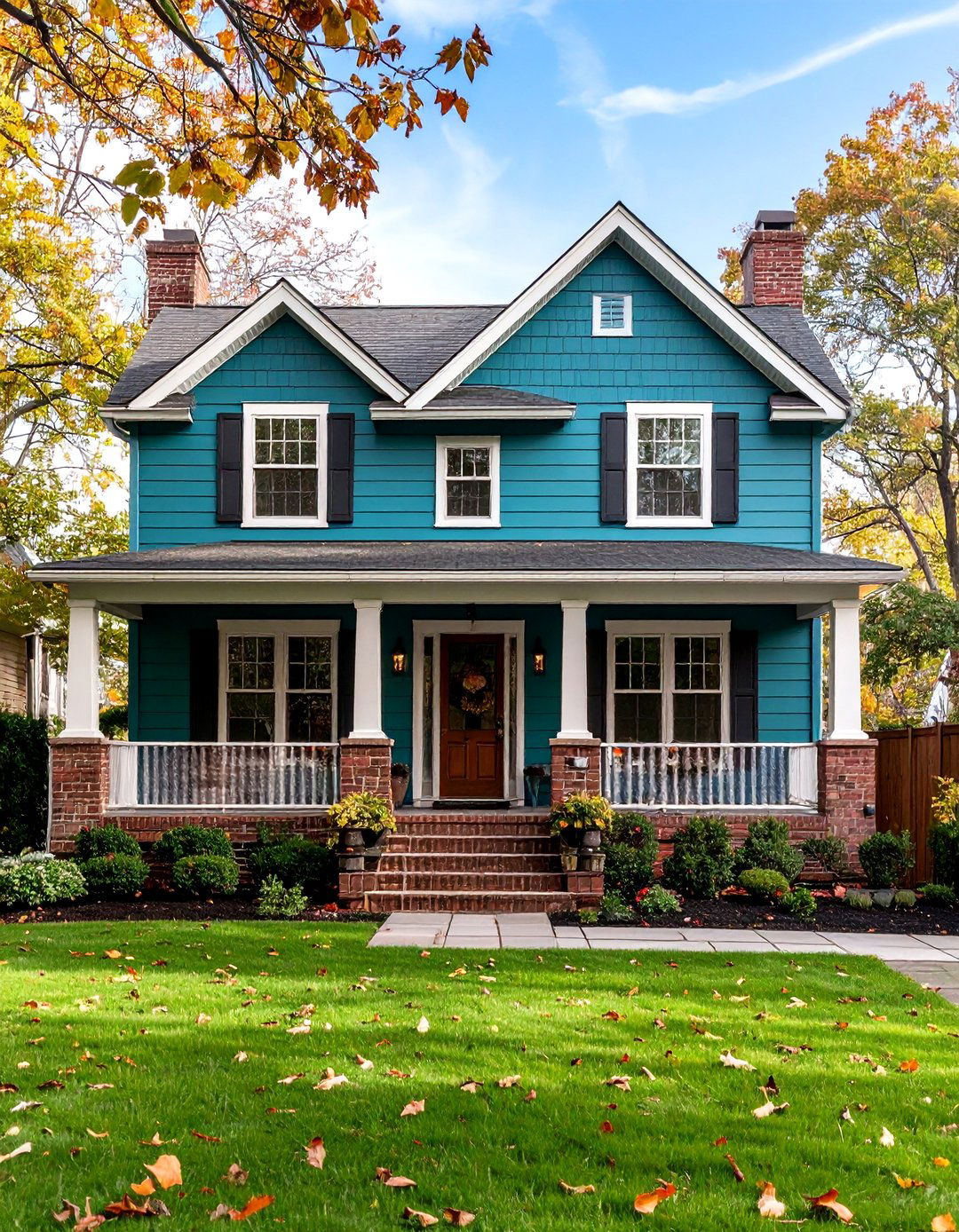
For a vibrant, eclectic look, pair teal siding with mustard-yellow accents on doors, shutters, or trim. These complementary colors—teal being a blue-green and mustard a muted yellow—sit opposite on the color wheel, creating energetic contrast. Use mustard sparingly to avoid overpowering the teal; small applications around focal points suffice. Homes & Gardens notes that unexpected color pairings can highlight unique architectural details while expressing individuality.
7. Pastel Teal Cottage Style
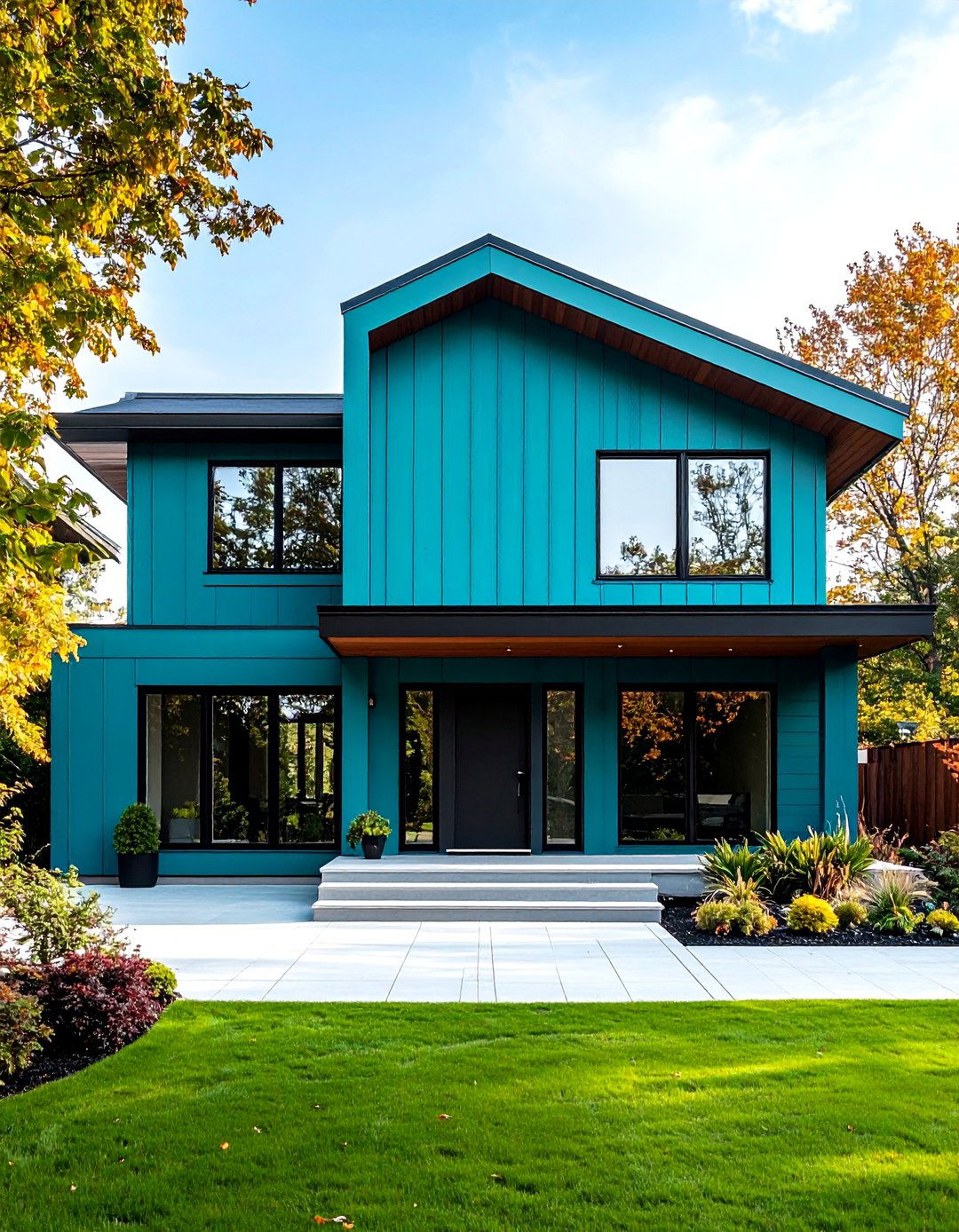
A softer, pastel teal works beautifully on quaint cottage exteriors, evoking coastal charm without overwhelming. Combine with white picket fences, window boxes filled with blooms, and rustic hardware for a storybook aesthetic. The lighter hue reflects sunlight gently, brightening narrow streets or shaded lots. As The Spruce outlines, pastel blue-greens impart a serene, welcoming vibe suitable for small-scale homes or guest cottages.
8. Teal and Brick Blend
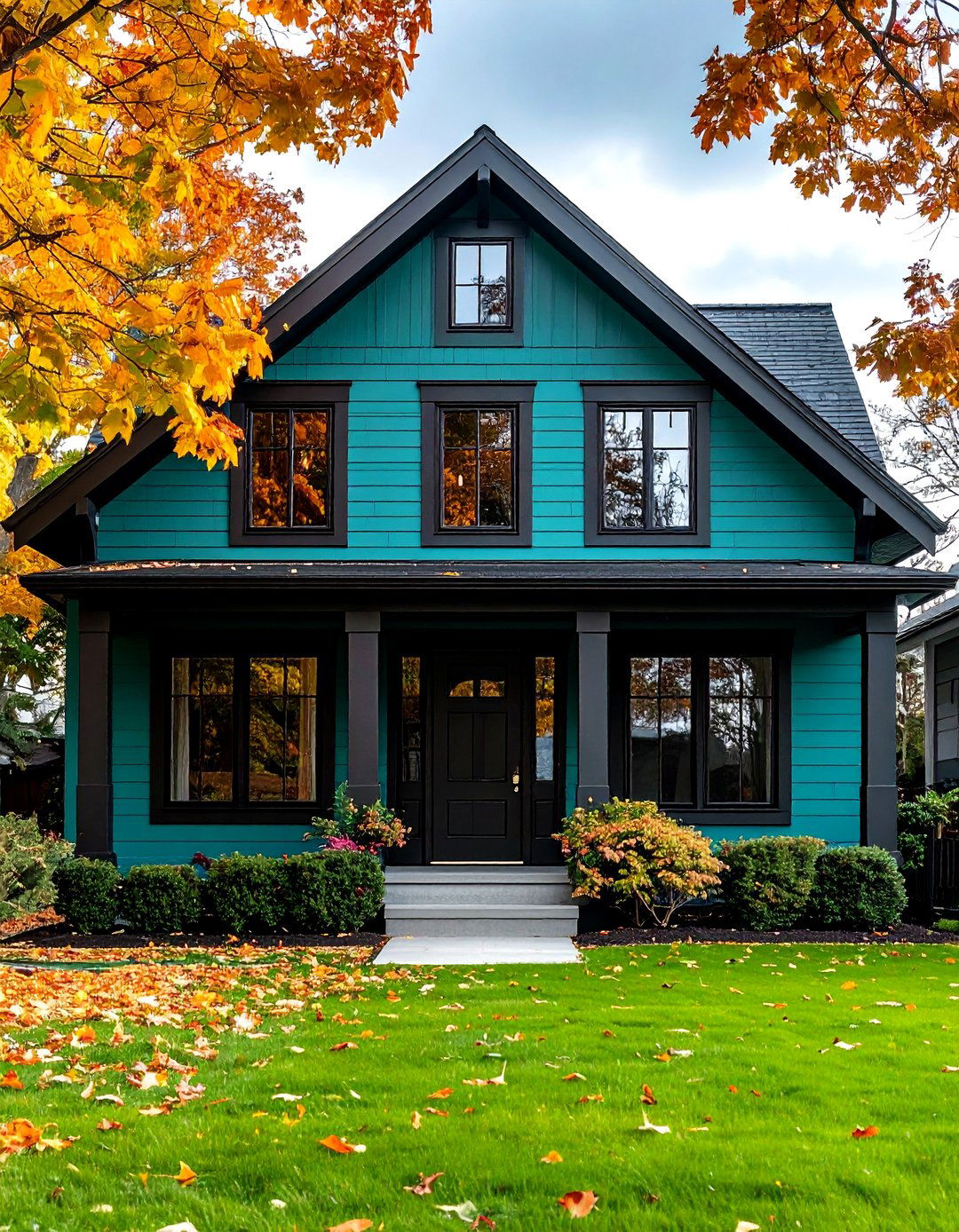
Integrating teal paint with exposed brick elements bridges modern color with traditional architecture. Paint upper siding or gables teal while leaving lower brick walls natural, or vice versa for a reverse look. The brick’s earthy reds and browns complement teal’s cool tones, resulting in a balanced, textured façade. A Reddit exterior design thread highlights successful conversions where homeowners embraced existing brickwork paired with fresh teal paint for renewed character.
9. Tropical Teal with Lush Landscaping
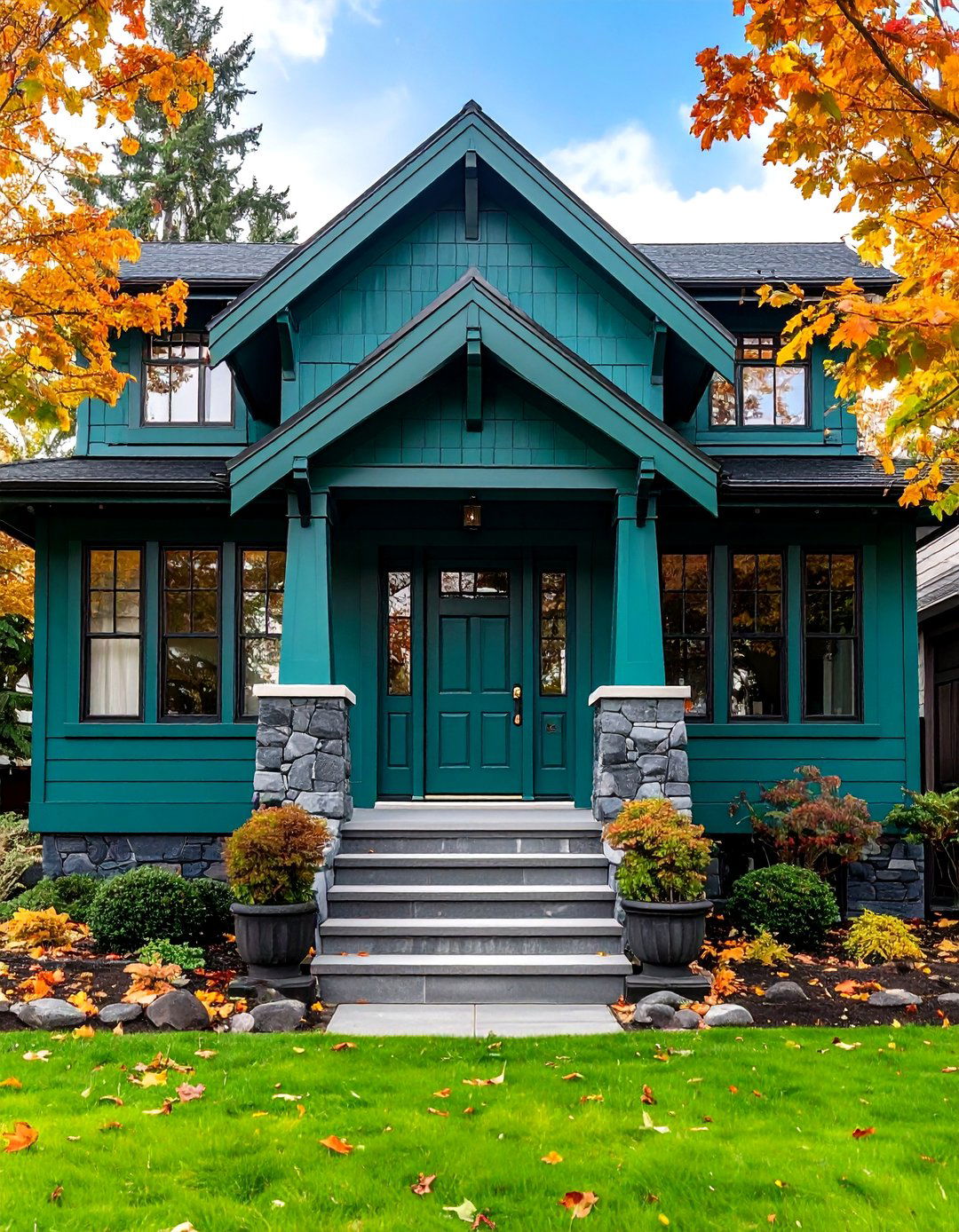
Use teal as a backdrop for vibrant tropical landscaping—palm fronds, bird of paradise, or hibiscus—to amplify a vacation-like atmosphere. The bold teal walls evoke Caribbean villas, while greenery softens the surfaces and adds depth. Accent with terracotta pots or natural stone pathways to reinforce the tropical theme. Pinterest galleries illustrate how lush plantings and teal exteriors transport the senses to coastal retreats.
10. Teal with Charcoal Accents
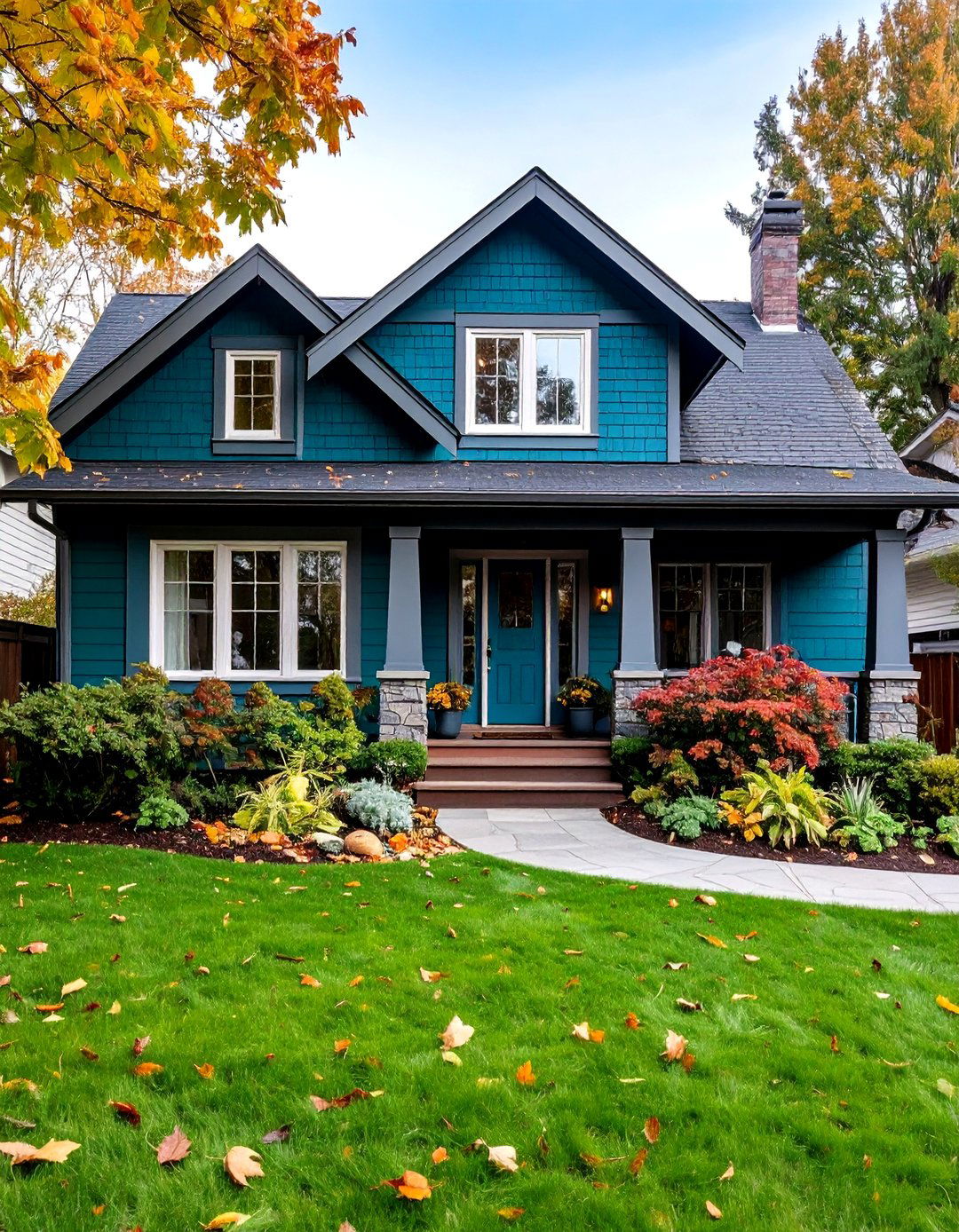
For a moody, sophisticated palette, combine deep teal siding with charcoal or dark gray trim, gutters, and downspouts. This tonal scheme offers subtle contrast while maintaining an overall dark, mysterious aesthetic. Ideal for modern or industrial-style homes, the charcoal elements tie together rooflines and architectural details without stark brightness. Houzz features many examples where charcoal accents refine a teal exterior into a cohesive, contemporary look.
11. Teal and Copper Roofing

Pair teal walls with a standing-seam copper roof that will naturally patina to green over time, subtly echoing the teal hues below. The metallic sheen adds a luxe touch, while the emerging verdigris patina creates a seamless transition between roof and façade. This combination suits historic restorations and modern builds alike, offering long-lasting beauty and architectural interest.
12. Teal Mediterranean Stucco
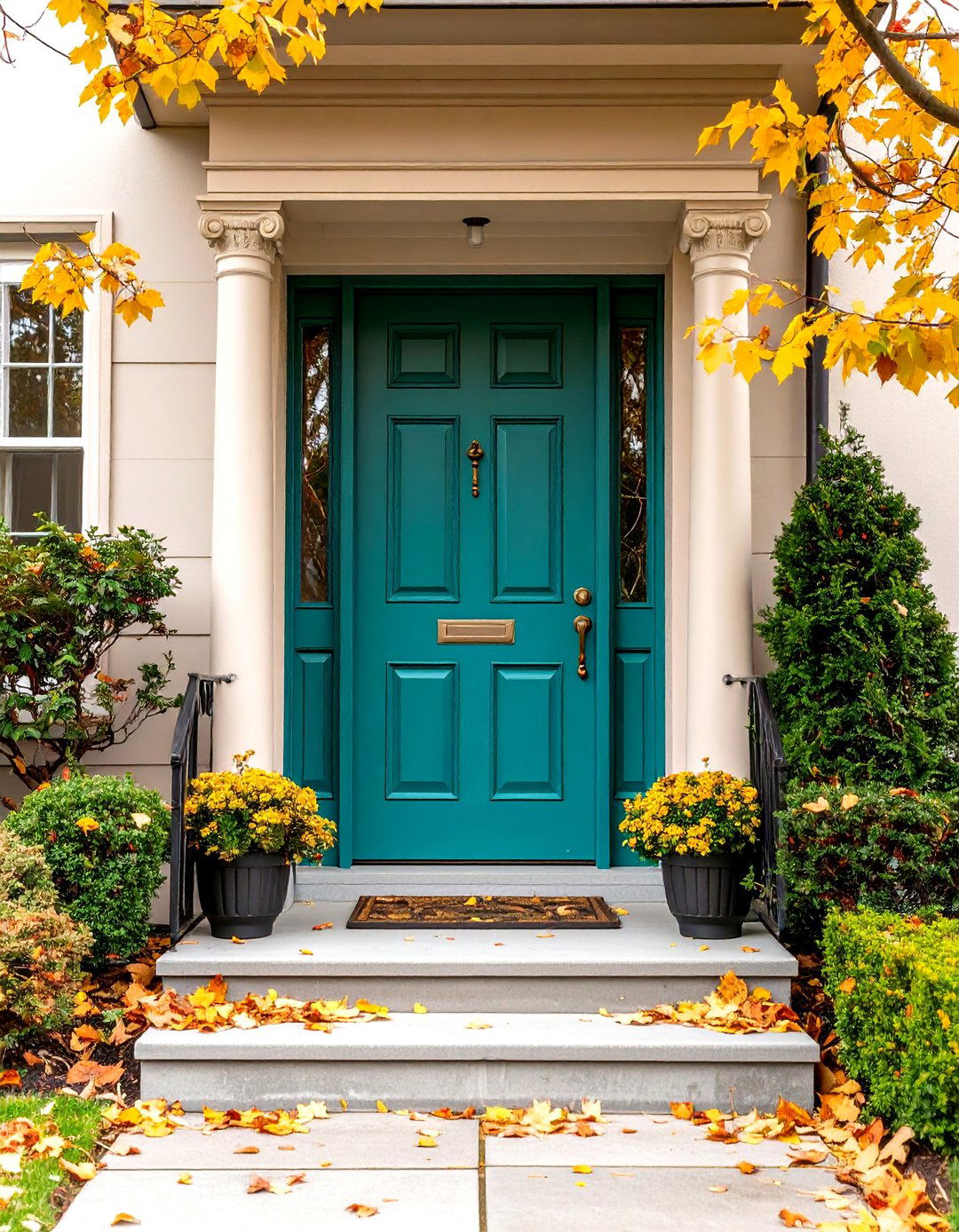
Apply a smooth teal stucco finish for Mediterranean or Spanish-style homes. Teal’s cool depth contrasts beautifully with terra-cotta roof tiles and ironwork details, creating a refreshed take on classic Mediterranean palettes. Incorporate arched windows and decorative tile insets to reinforce the style, ensuring harmony between color and form.
13. Teal Victorian Revival
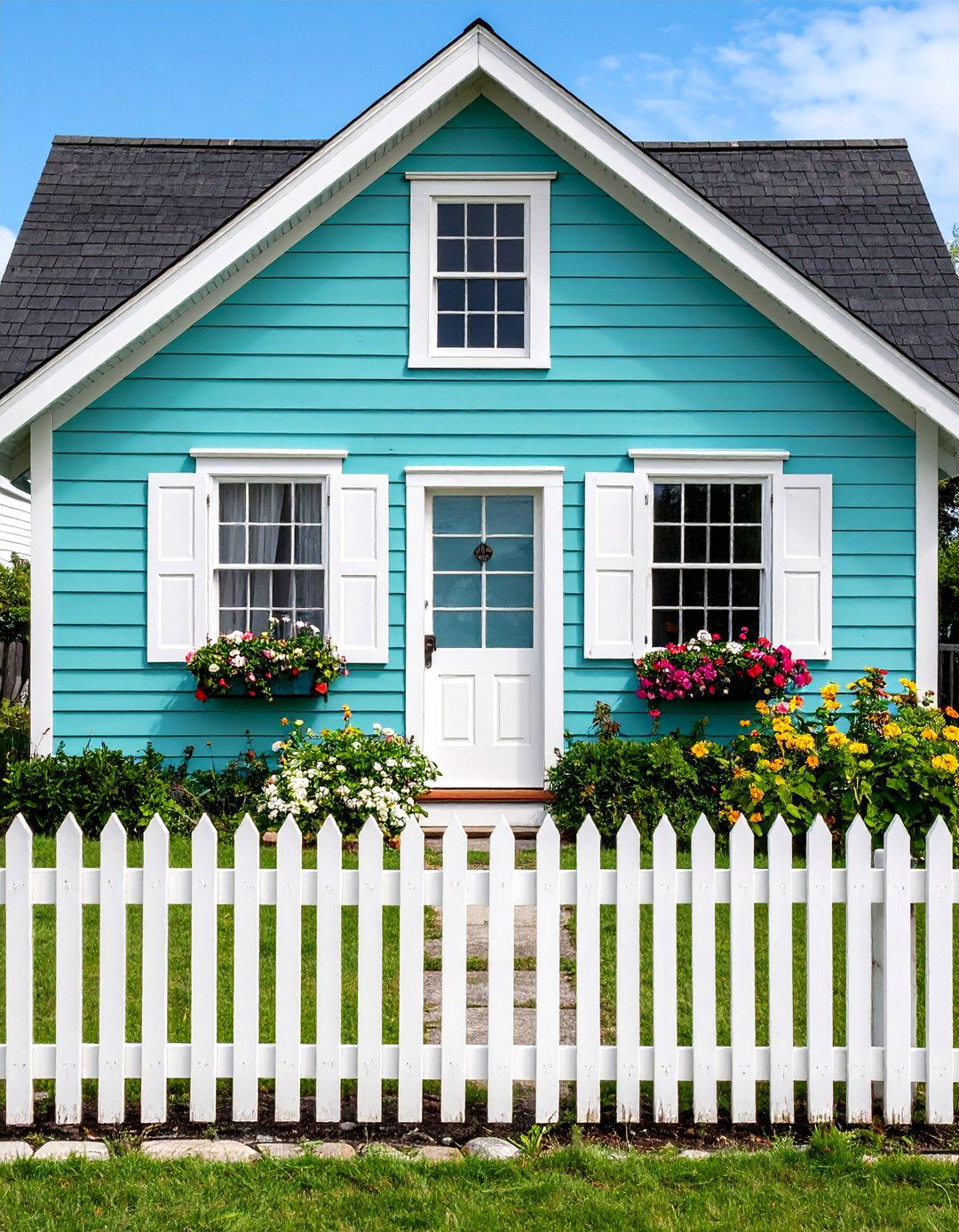
Reinvigorate a Victorian home by painting ornate trim elements—gable brackets, spindlework—in teal against a lighter base color. Alternatively, reverse the palette with teal siding and cream trim. The historical silhouette combined with teal’s richness creates a unique, eye-catching restoration that honors tradition while embracing contemporary color.
14. Teal Minimalist Modern
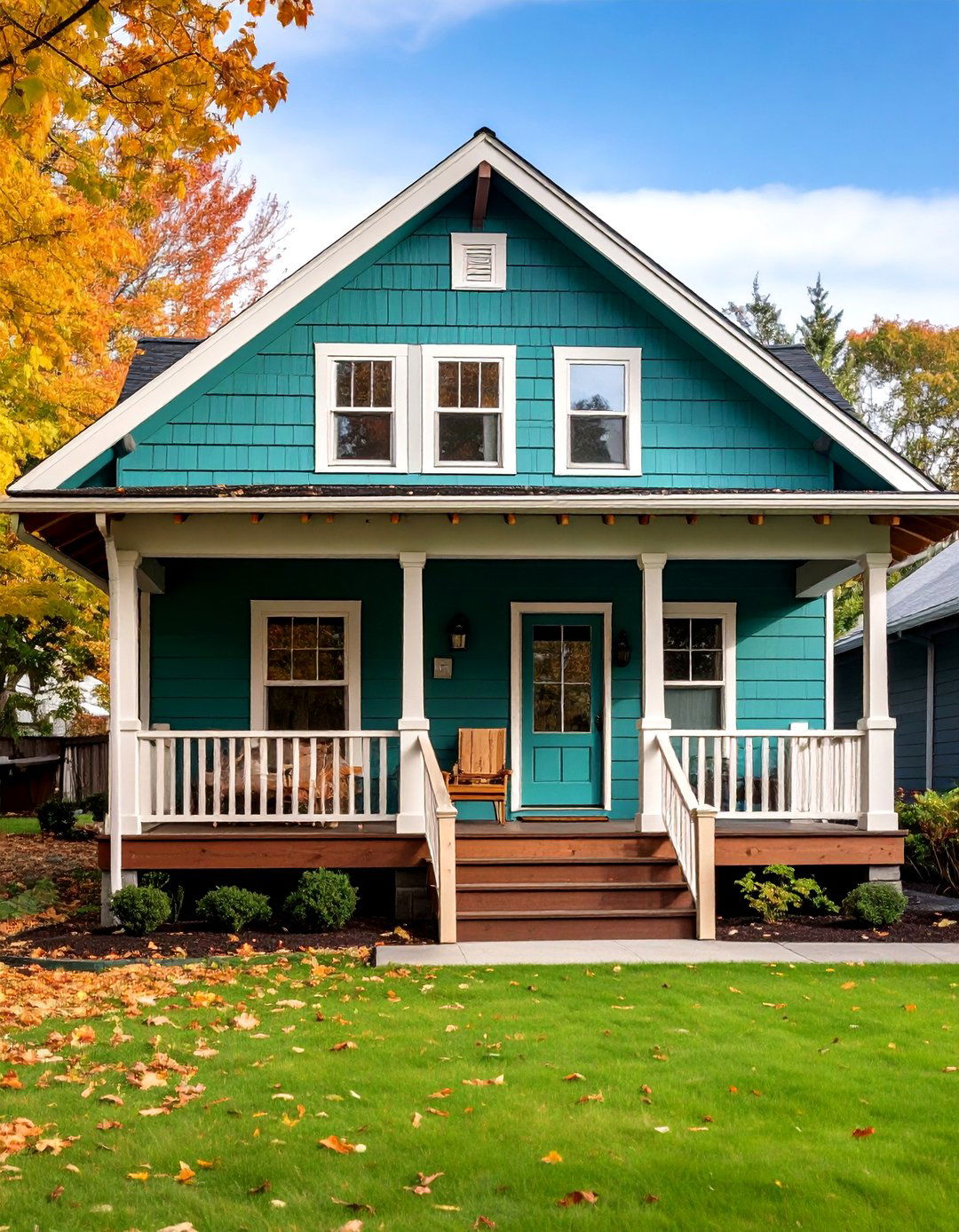
On a minimalist box-like structure, teal applied uniformly across large, uninterrupted planes emphasizes geometry. Minimal trim, hidden gutters, and flush windows allow the teal to dominate, highlighting the form rather than fussing over details. Pair with concrete walkways and simple landscaping to maintain the clean, unornamented ethos.
15. Teal Craftsman Bungalow
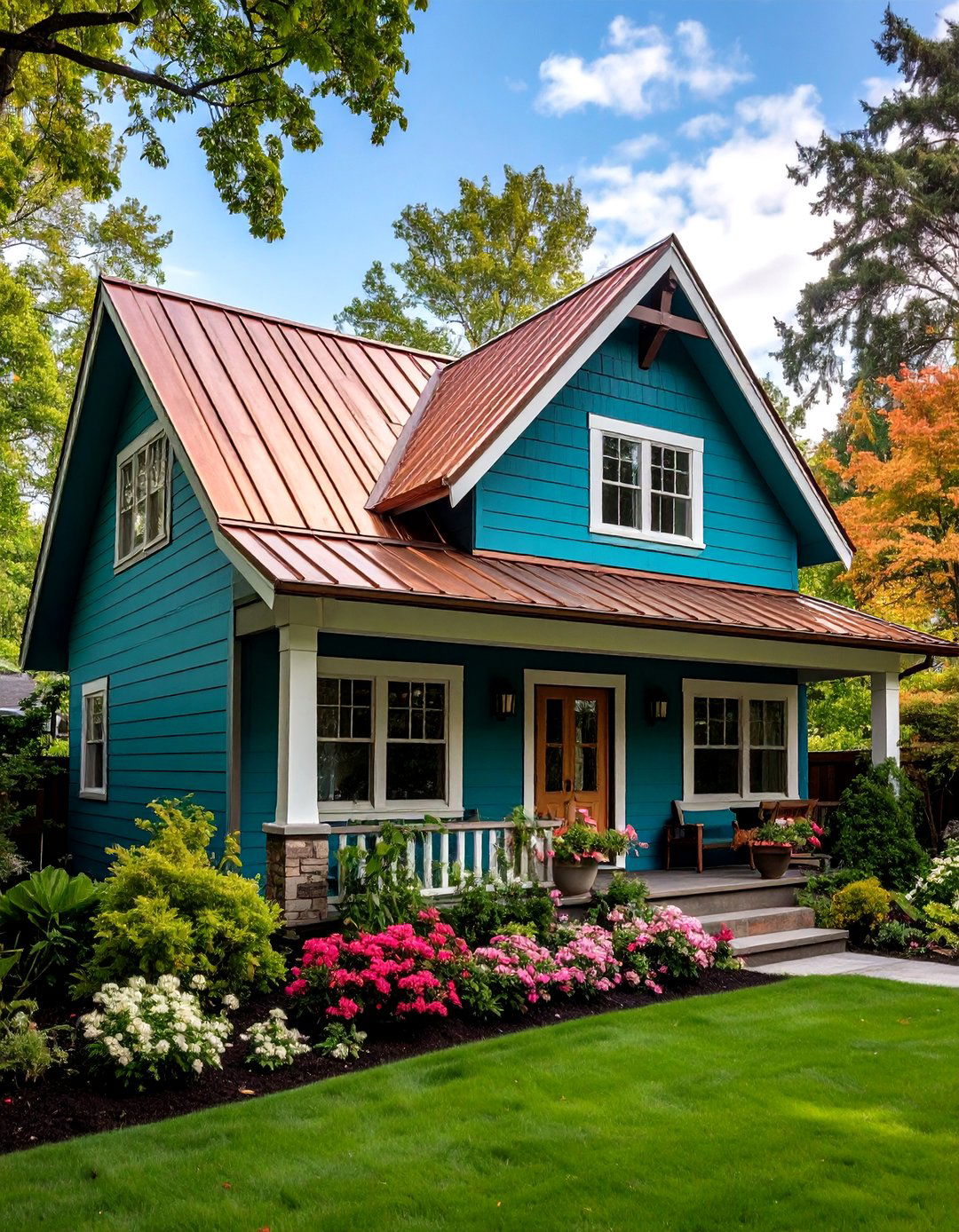
Teal siding paired with crisp white trim and natural wood elements—porch posts, exposed rafters—enhances a Craftsman bungalow’s hallmark features. The combination underscores handcrafted details and invites a warm, homey feeling. Add stone porch bases and a teal front door to complete the cohesive, rootsy aesthetic.
16. Teal Beach House Vibe
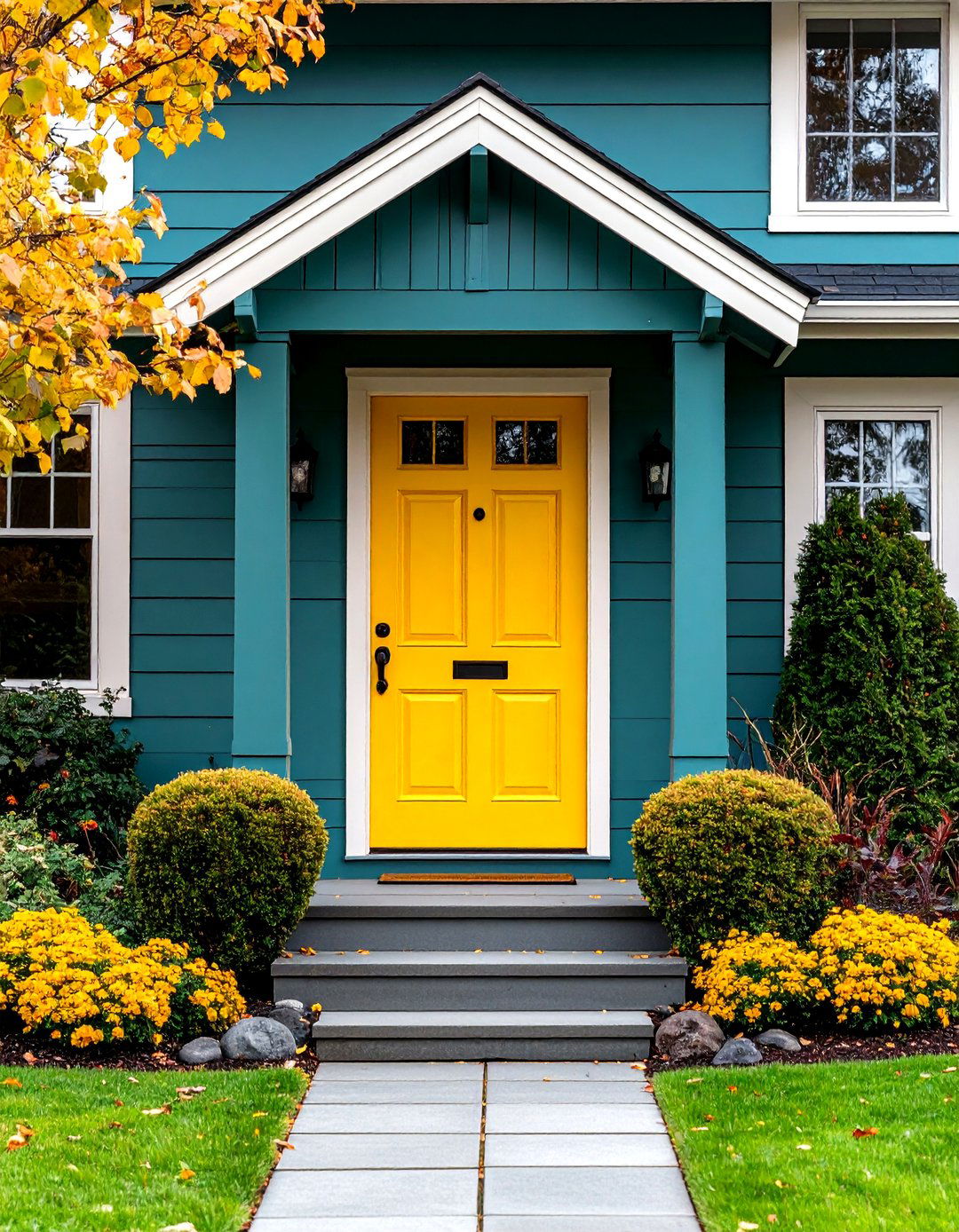
Opt for a bright, sunlit teal exterior on beachside homes to reflect ocean hues. Complement with white railings, rope hardware, and nautical accents. Weather-resistant materials—fiber cement siding, marine-grade fixtures—ensure durability, while the vibrant teal makes the home feel at one with its coastal surroundings.
17. Teal Garage Doors
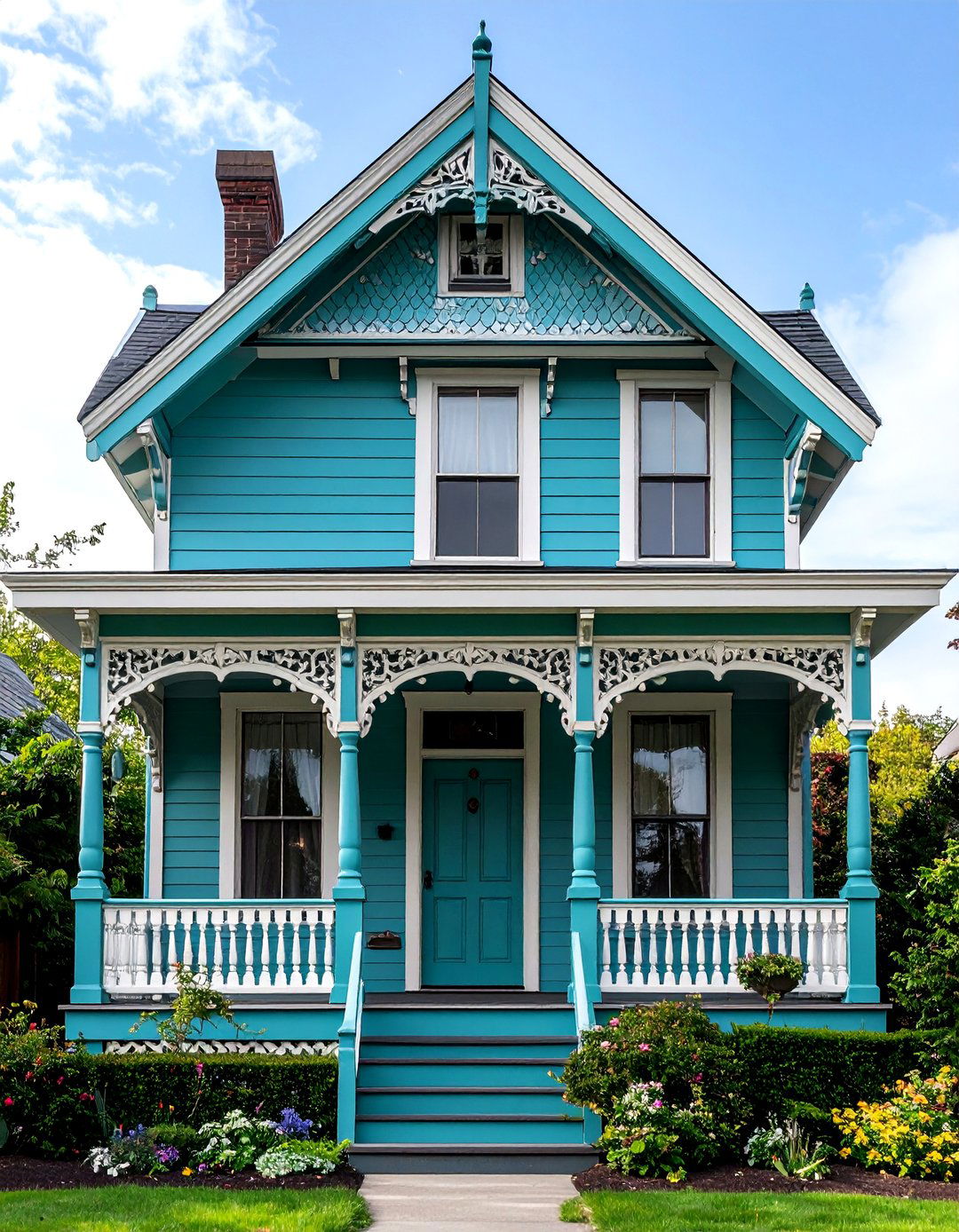
Introduce teal through garage doors against a neutral main house color. Sectional metal or carriage-style doors painted in teal become focal points, breaking up large façades. This subtle application allows experimentation with teal without fully committing the entire structure, and coordinates well with matching window shutters or trim.
18. Teal Metal Cladding
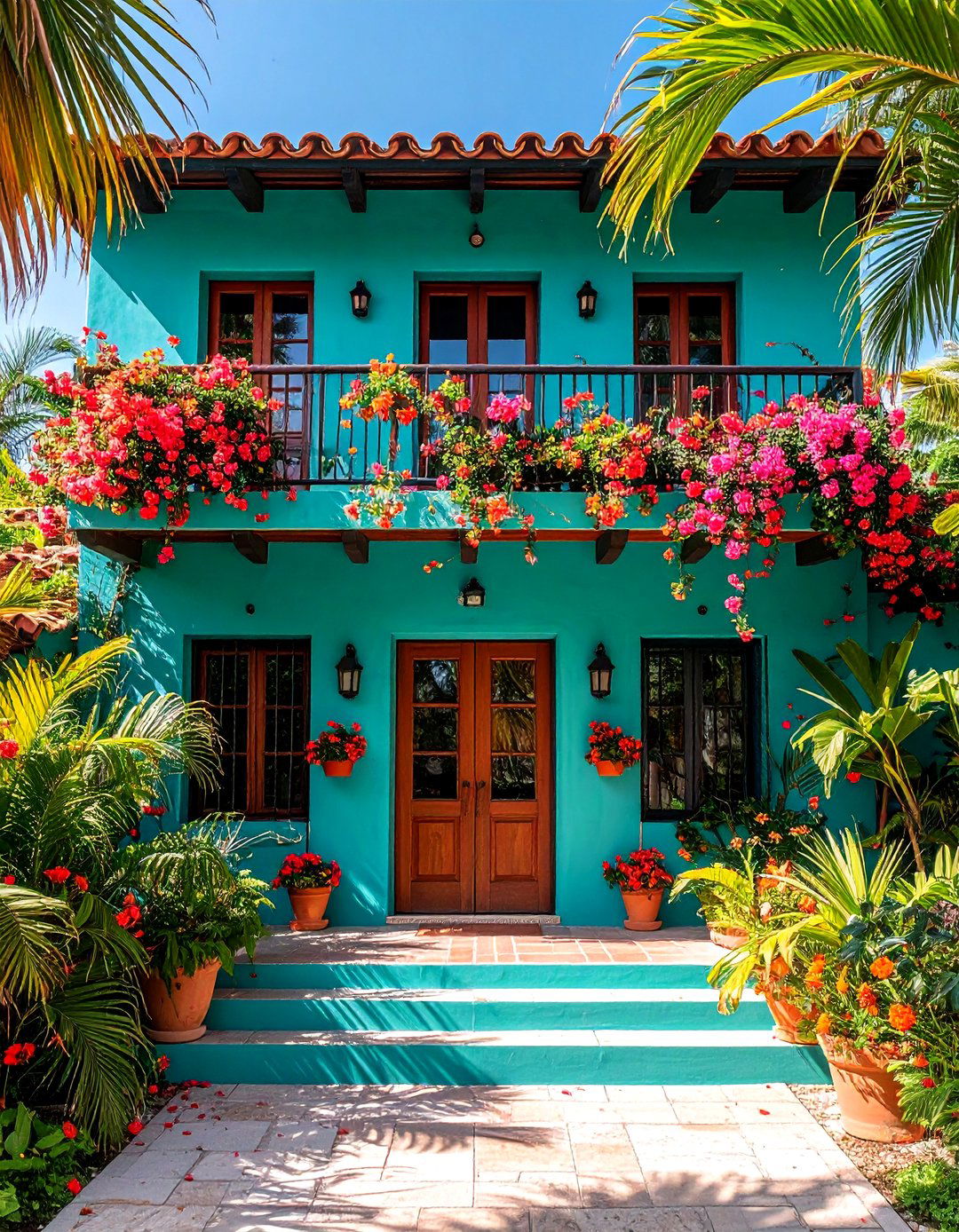
Use corrugated or flat metal panels in teal for a modern, industrial exterior. The sleek surface reflects light differently throughout the day, adding dynamic interest. Pair with concrete or wood accents to soften the metallic sheen, and incorporate large windows to break up the solid teal planes.
19. Teal and Greige Harmony
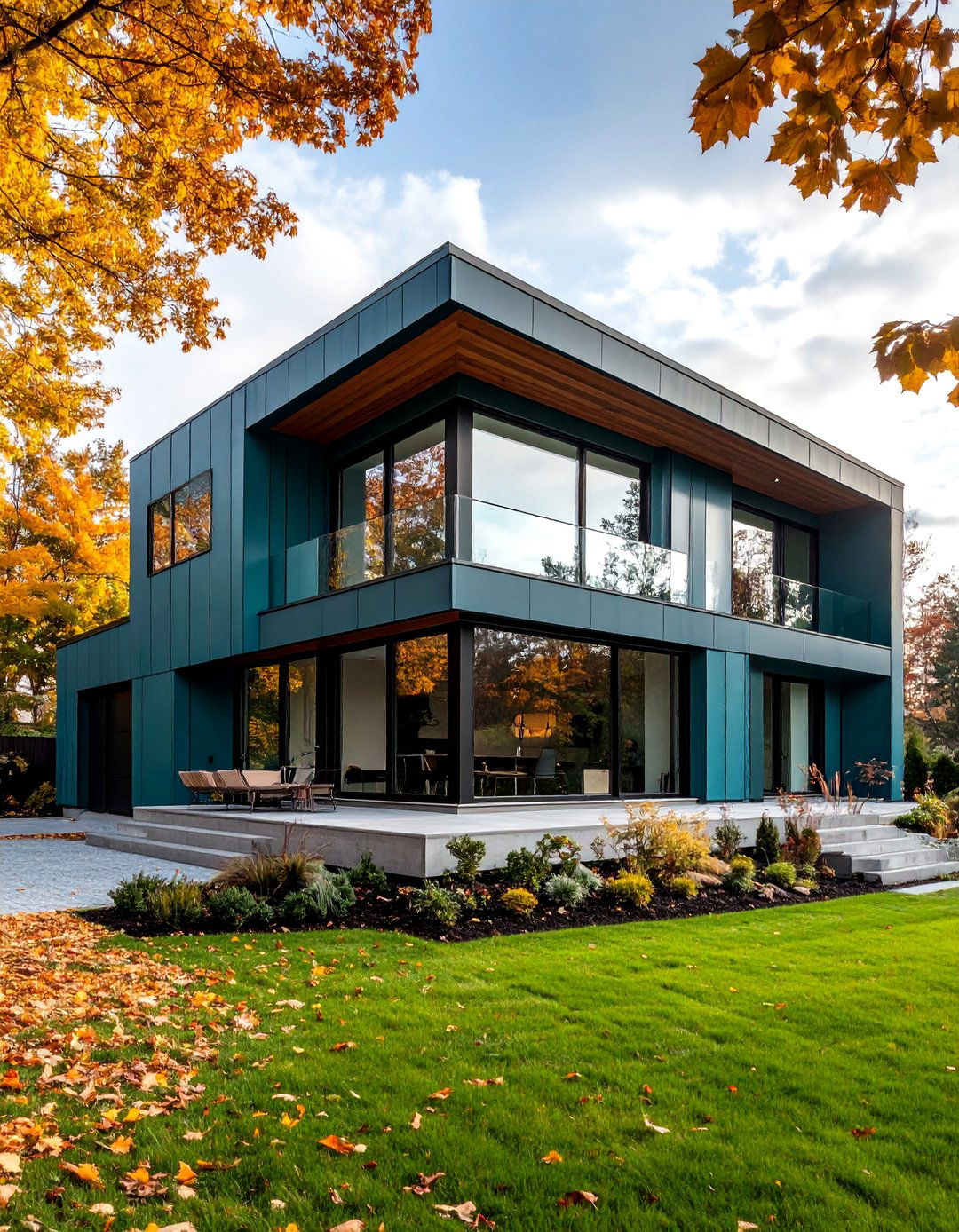
Combine teal siding with greige (gray-beige) trim and accents for a muted, sophisticated palette. Greige’s warmth tones down teal’s vibrancy, creating an elegant, subdued look. This pairing suits transitional architecture, offering enough contrast to highlight features without stark brightness.
20. Teal with Bold Yellow Door
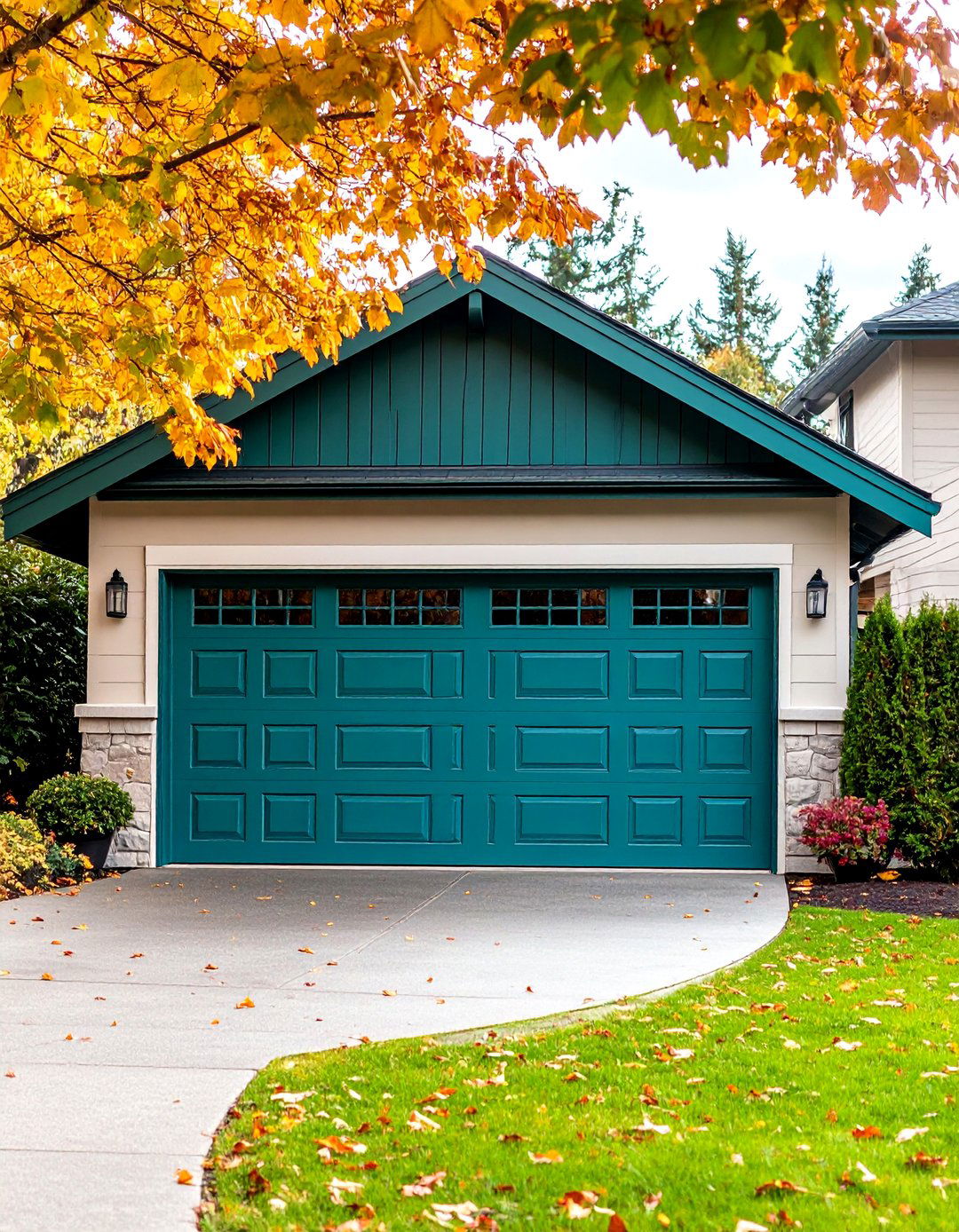
For a playful twist, paint the main exterior teal and choose a bold yellow front door. Yellow and teal form an energetic complement, drawing the eye to the entry. Balance with neutral trim and minimal landscaping to allow the door’s sunlit pop to shine without competing elements.
Conclusion:
Teal’s versatility—from pastel serenity to deep jewel tones—allows it to adapt across architectural styles and climates. By pairing teal with contrasting trims, natural materials, or unexpected accent colors, homeowners can craft unique exteriors that reflect personal taste and enhance curb appeal. Whether applied as a full façade, a statement door, or selective cladding, teal introduces freshness and character, proving that thoughtful color choices transform ordinary homes into standout designs.


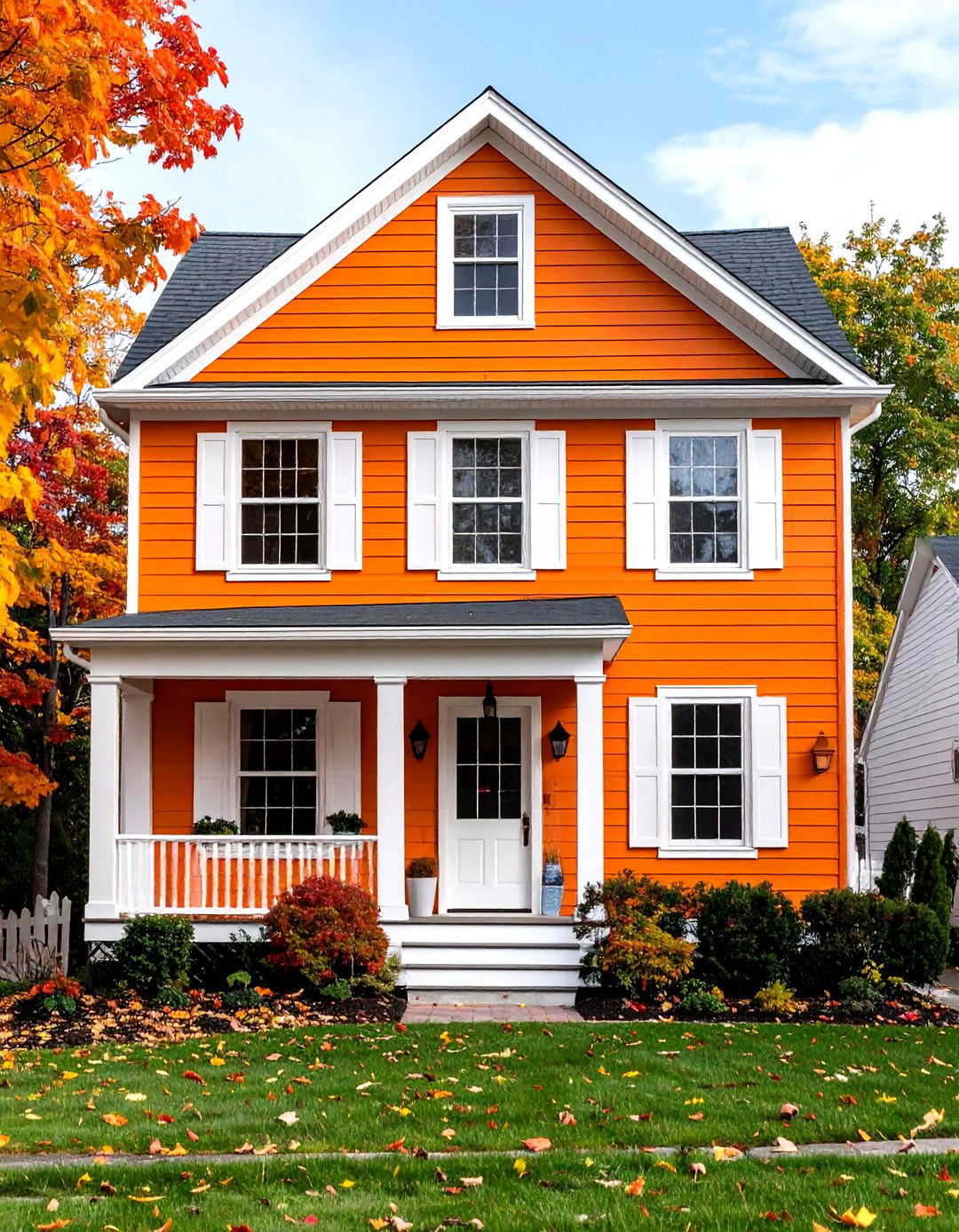
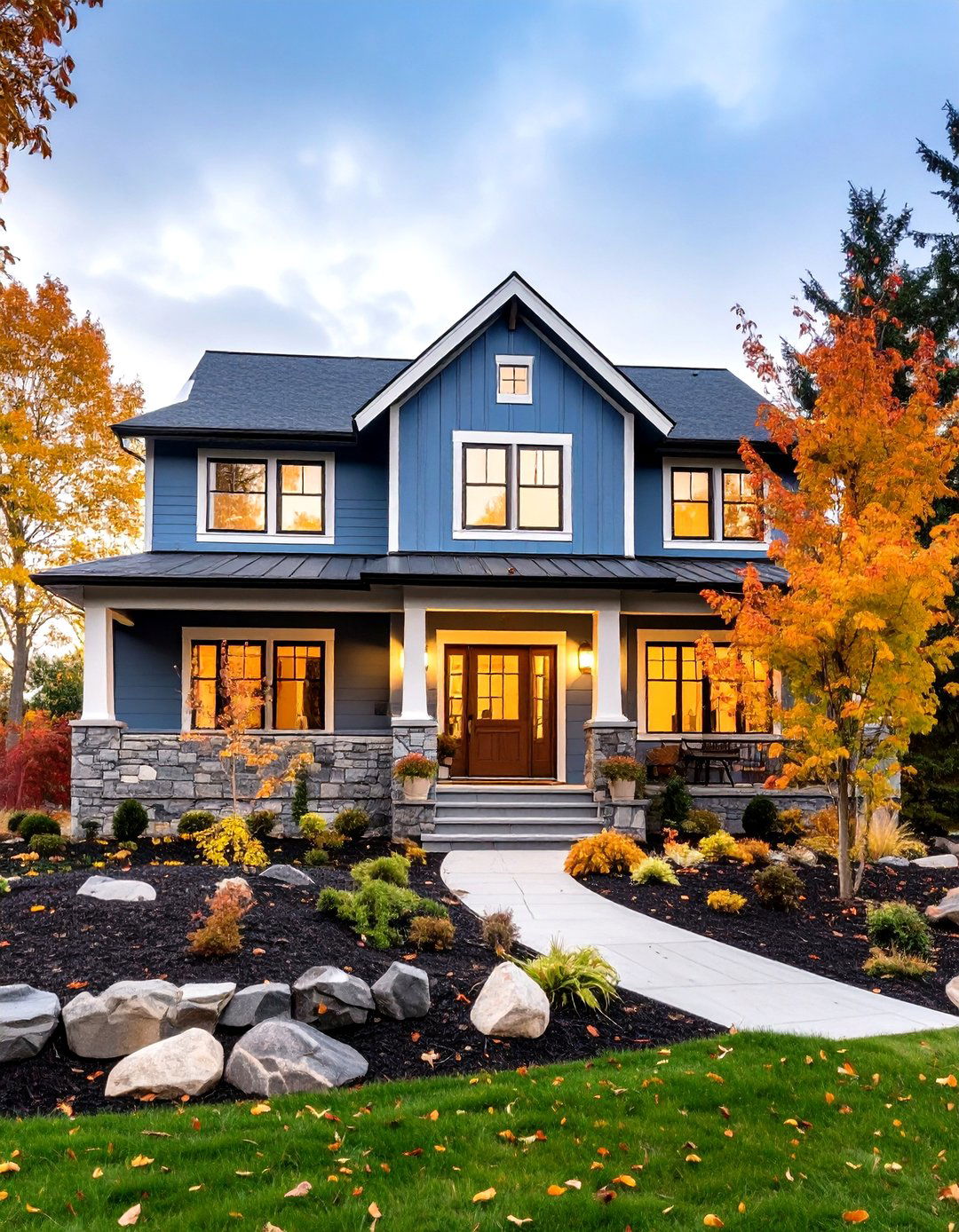
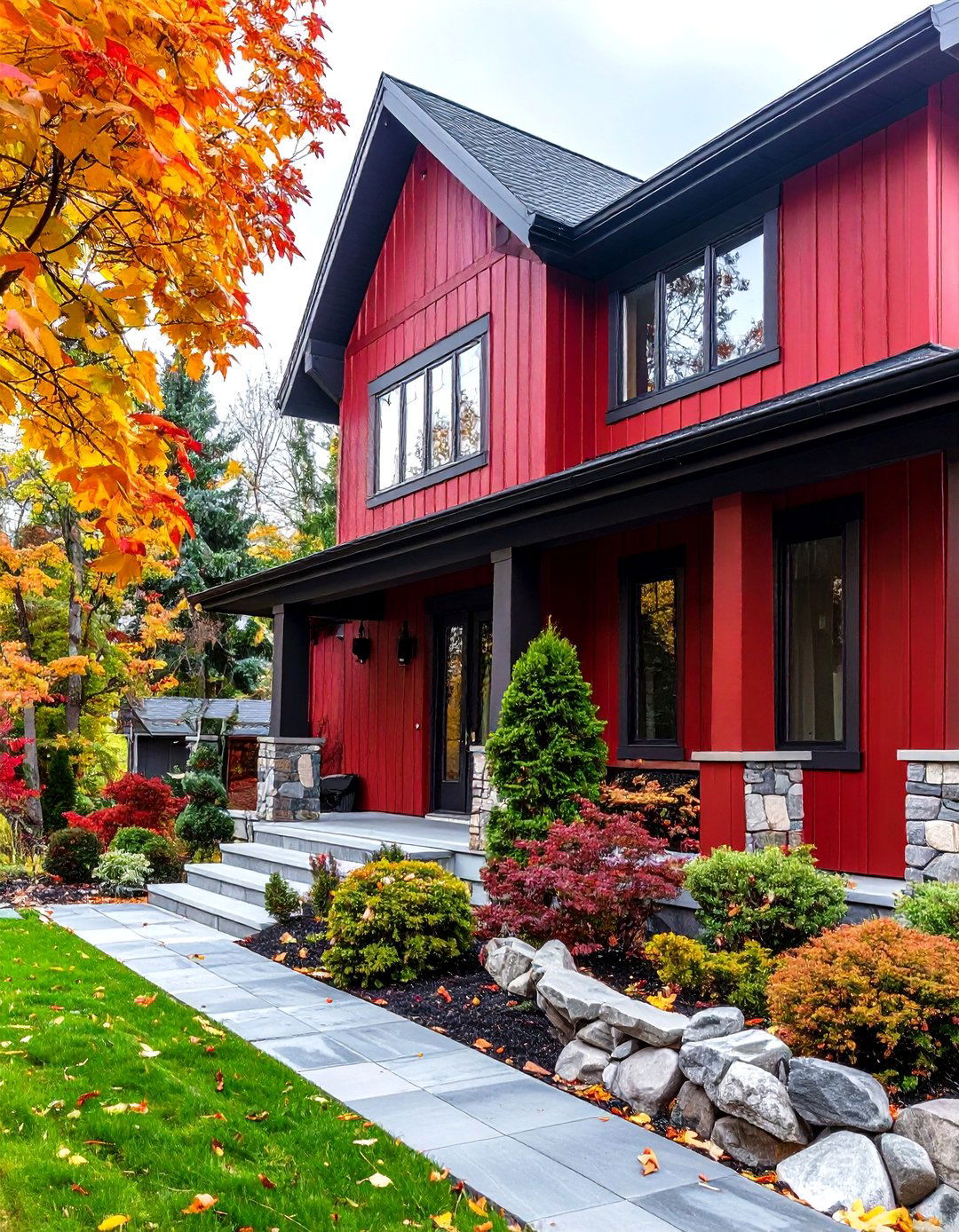
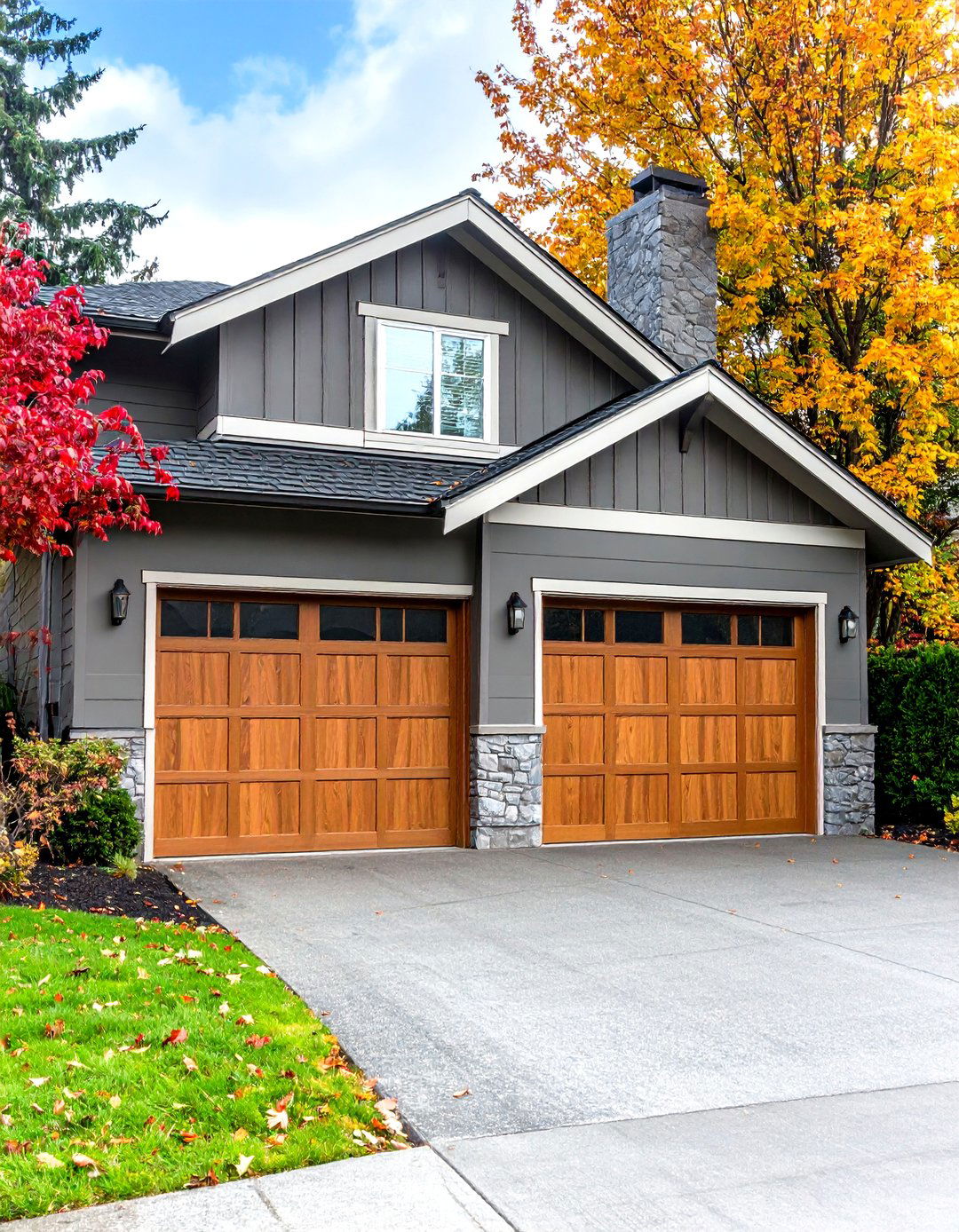
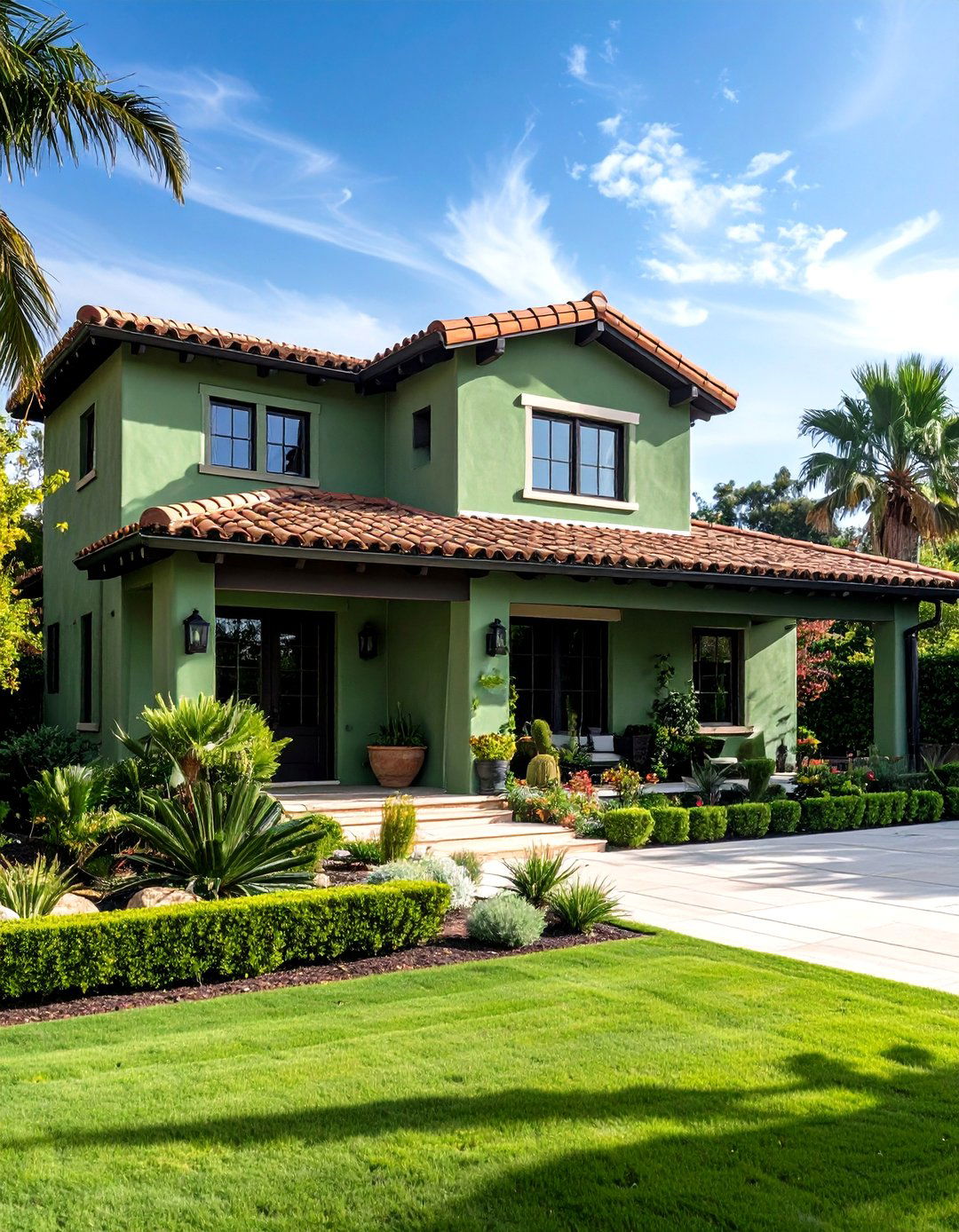
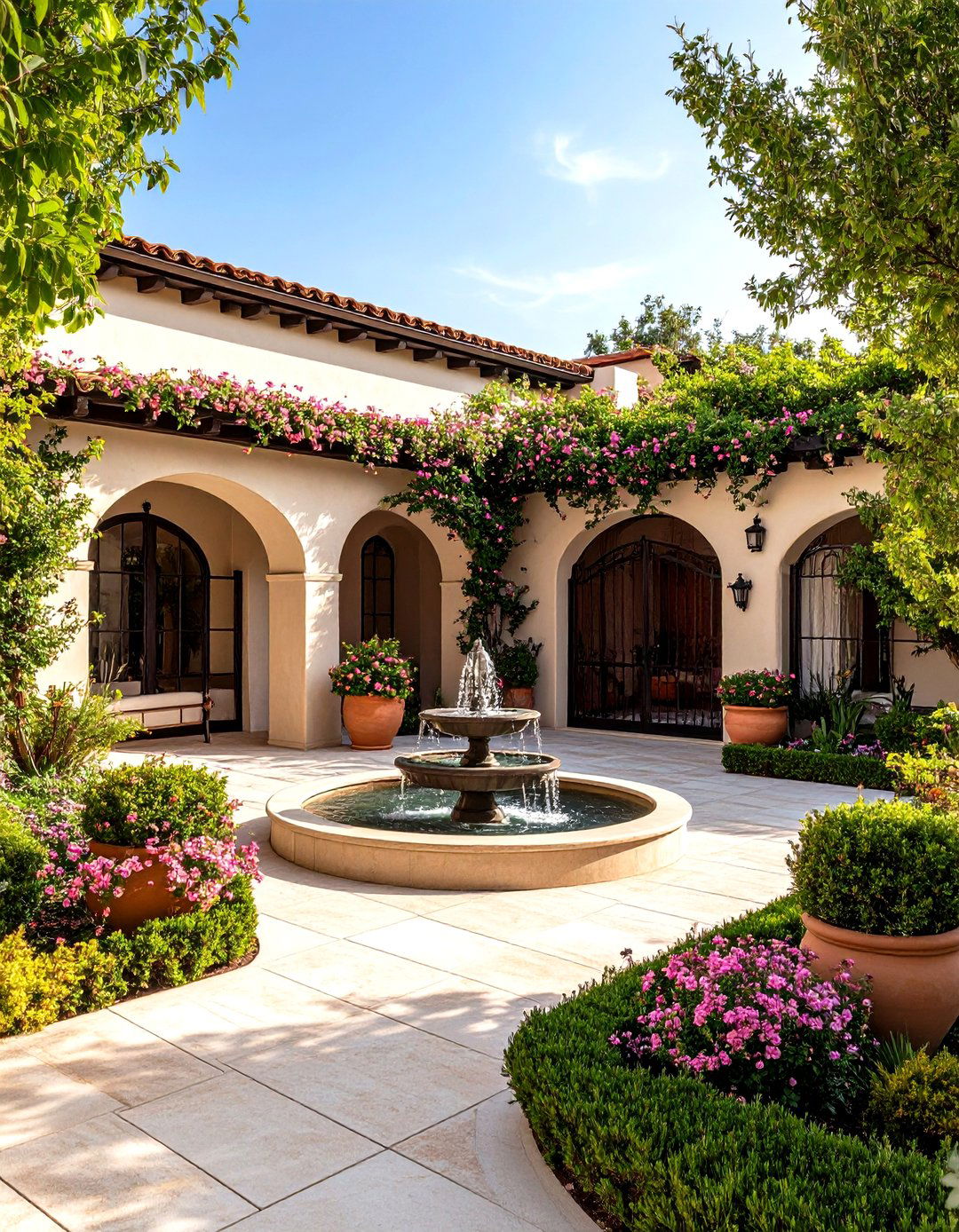


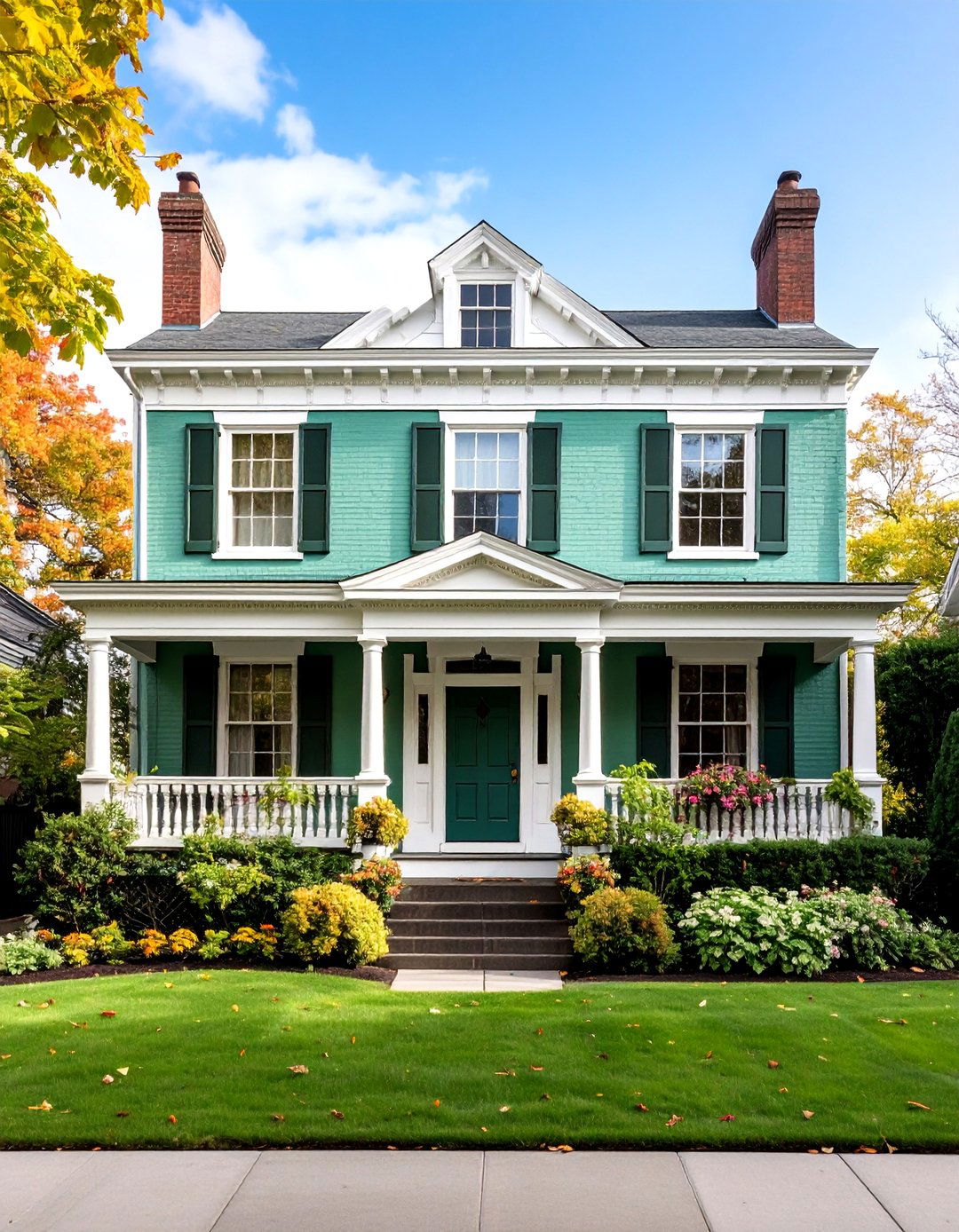
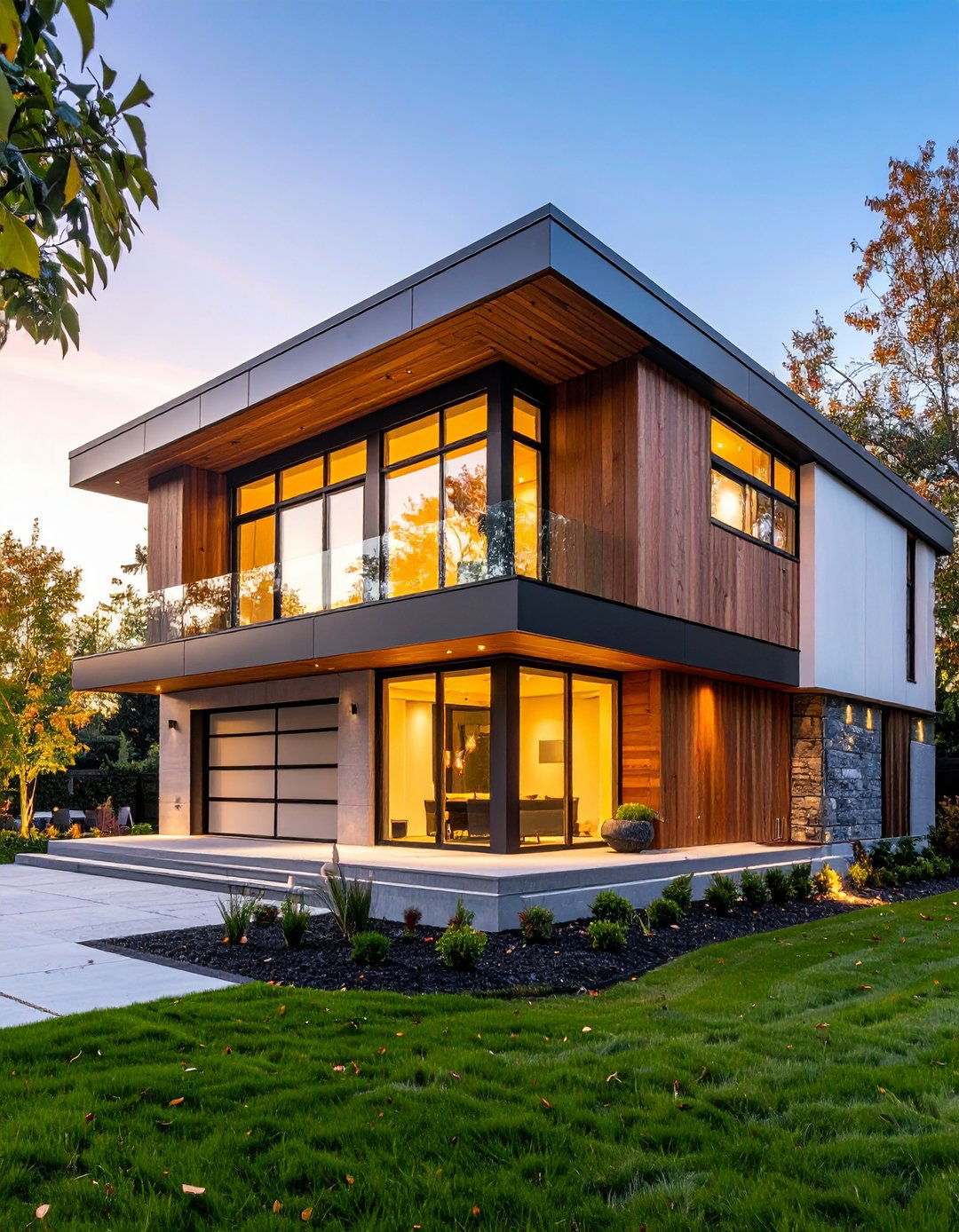
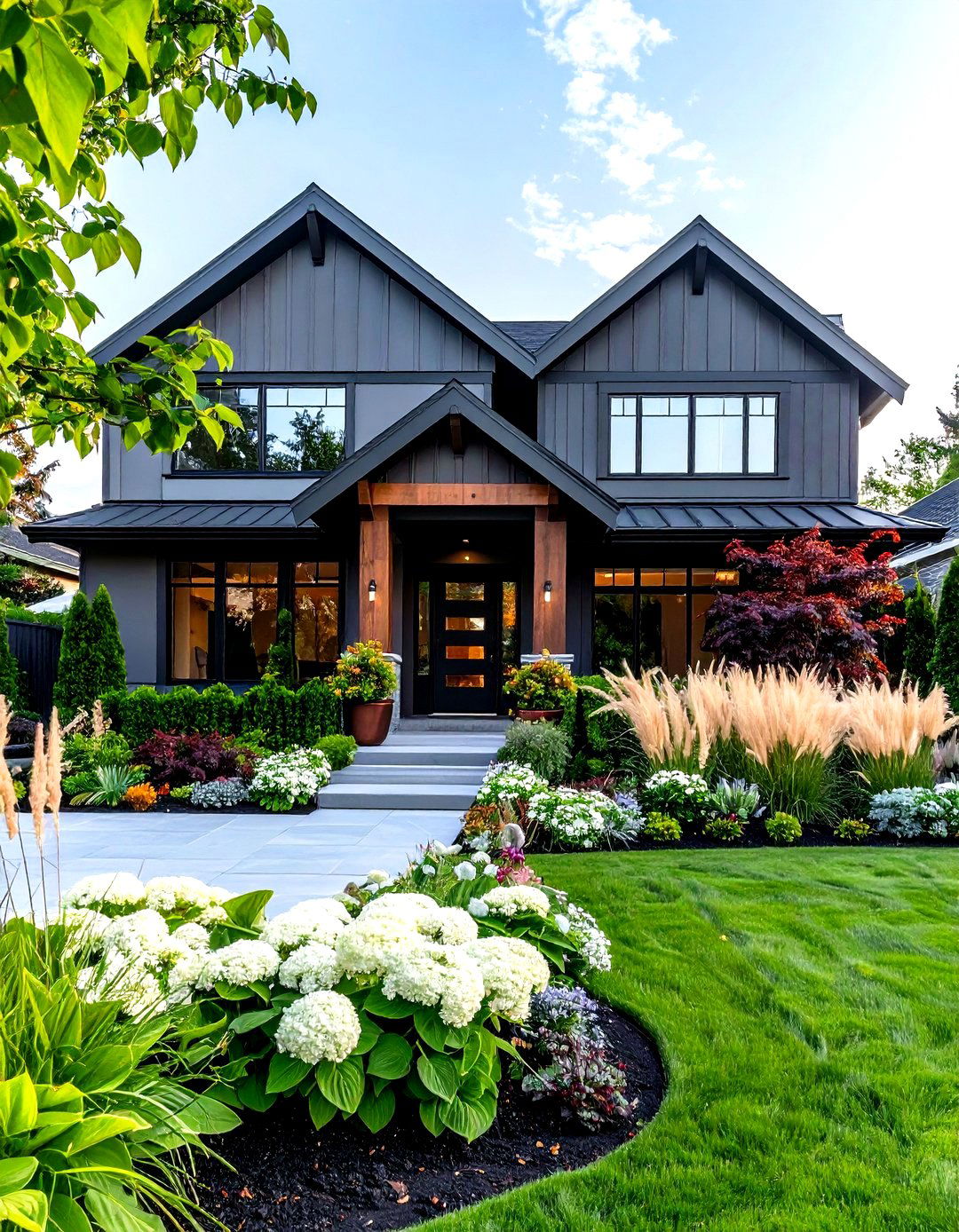
Leave a Reply